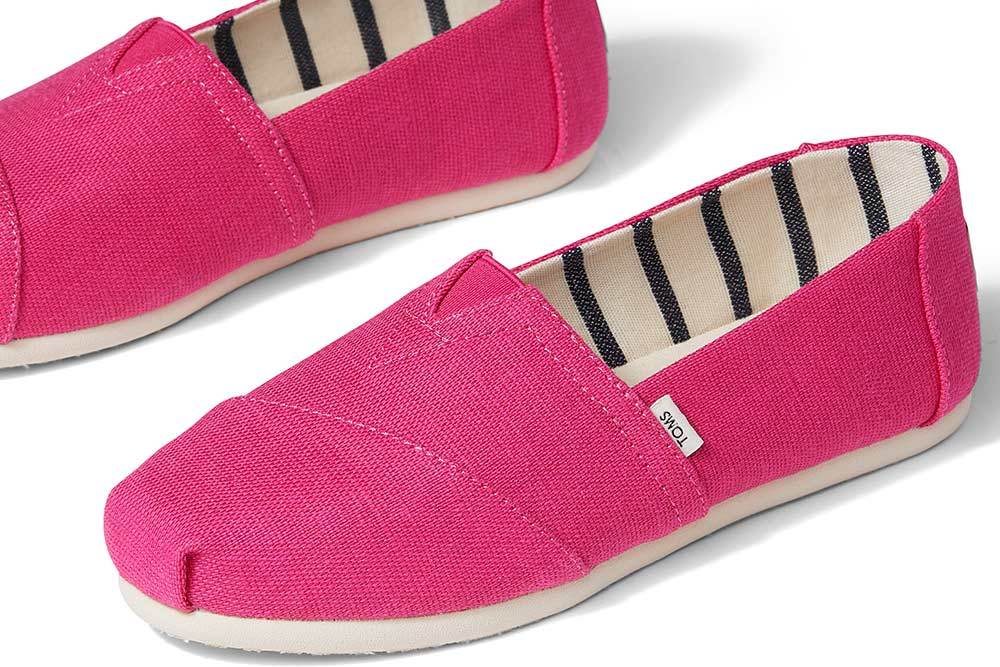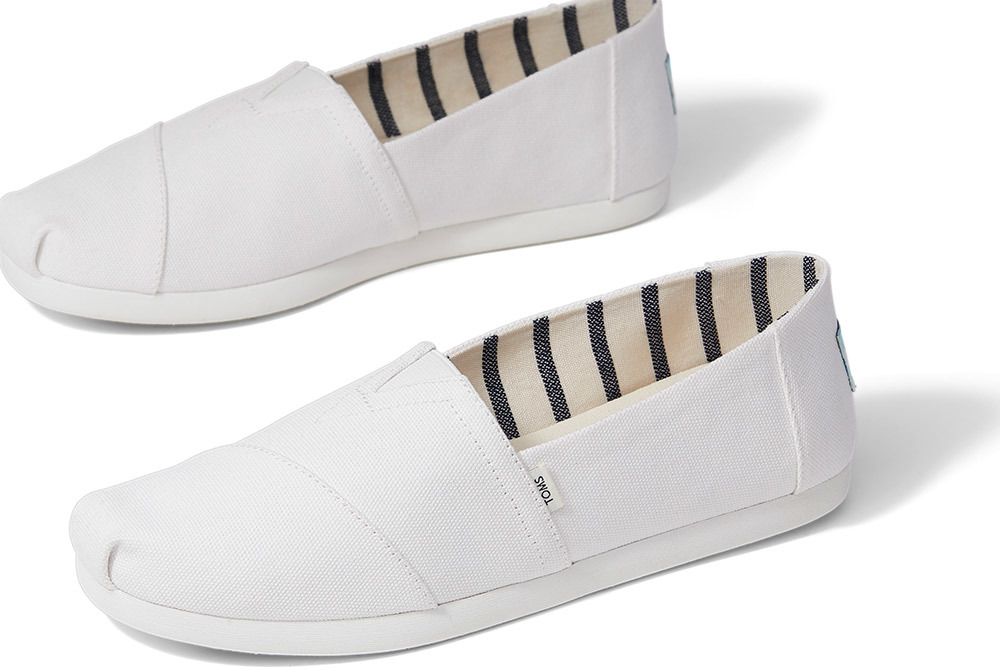
TOMS Celebrates Fifteen Years Of Making Shoes - And Making A Difference
Say goodbye to the one-for-one model, and hello to a new way of giving back.
If you’ve been anywhere during the past decade and a half, the odds are you’ve seen – and probably owned – a pair of TOMS. Launched in 2006, the brand quickly became ubiquitous, revolutionizing the classic espadrille shoe for a new generation.
And it wasn’t just pioneering in style – from the very start, TOMS was a shining example of how businesses can help communities. Using their famous one-for-one model and other charity work, the company isn’t just celebrating fifteen years of sales – they’re celebrating making a positive difference to 100 million lives.
But the best may still be yet to come. At fifteen, TOMS is very much looking forward to their future - and they're planning to make some big changes.
We caught up with Amy Smith and Ian Stewart from the TOMS team to find out more.
So, the big news is the move away from the one-for-one model; could you tell us why you chose to make that change?

Amy: Shoes are a fantastic intervention in lots of way – but they aren’t very flexible. And we had manufacturing to manage, and our partner process was about six months. It would really take some time to be able to meaningfully support our partners through shoes, like, for example, in the past year during the pandemic.
The issues facing the world today – and the consumer base – are evolving and changing. Gen Z understand the issues and want to be directly. involved.
And so, we thought let’s do the research, let’s understand the issues and what our non-profit partners need. And that was the impetus.
That sounds really exciting. Could you tell us more about your new approach?
Amy: We are in business to improve lives, we are committed to that and that is not changing. But the big news for TOMS right now is that we’ve made the decision to move away from our one-for-one shoe giving model, to one third of our profits for grassroots good, moving towards more equity in the world. So one-third of profits to create equity.
And so that’s a really big change for us, it’s something we’re excited about and that we feel is really relevant to a younger consumer. They’re very savvy, they know what’s going on in the world and they care about this topic very much.
We believe we’ve chosen some issue areas under equity where we feel that there’s an opportunity to create great impact with our partners. We decided to focus on creating equity in mental health, in access to opportunities, specifically in education and work, and in ending gun violence here in the United States. And what will be especially interesting (for your readers) is that the areas which we are focused on are black, indigenous and people of color communities, and women and girls.
We’ve tried to hone a model that is both flexible and can have a great impact.
You mentioned female-focused programs. Could you go into more detail?
Amy: Yes. So more recently we’ve been working with an organisation called Magic Bus. And they support young, entrepreneurial women in India. And, whilst India has a huge entrepreneurial population, but only about twenty percent of them are women and girls. So Magic Bus is supporting young women with the tools and the resources they need to bring their ideas to life.
It’s very aligned with how we think about grassroots programs – working with community leaders, to bring their ideas to life. We don’t want to write a big check and walk away – we’re developing deep partnerships, and Magic Bus is a charity we’ve been working with for years. And that’s just one example.
How do you envision the TOMS customer today – how have they changed, if at all?
Ian: We’re a very loyal brand. A lot of our current customers came to us fifteen years ago. And that’s awesome, but that’s no way to build a long term, sustainable business. We appreciate older, loyal customers but we know that the future of a brand is to reset. A lot of brands do that every year – we’re making a fifteen year jump from the forty-year old loyal, millennial woman to a twenty year old.
And that’s critical for our future. And if you do it right – and we will – you have to believe that young teenage girls will look up to slightly older Gen Z and be inspired by her. But also that older women will look down towards that Gen Z/younger millennial woman and be inspired too.
So, a lot of the reset we’ve done has been ripping up the rule book on branding and creativity. We’ve been putting in color, adding vibrancy, breaking rules – we’re not adding as many straight lines and fixed branding. Basically, we’ve been throwing it up and seeing what comes along.
And that speaks to Gen Z. We also upgraded our website – having a website that is world class in service is pretty important. And lastly, we’ve been resetting our approach to photography, by using Gen Z, by using people who aren’t necessarily models, but people who have social platforms and deep beliefs in social issues that align with our values. A lot of the upcoming photography is changing the rules. We want to be able to tell people stories, and be able to elevate smaller partners and the activists we’ll be putting into our campaigns.The vision of shooting with Gen Z, producing content by Gen Z for Gen Z – it might seem obvious, but a lot of brands aren’t doing that.
How will you choose conscious leaders and collaborations that best represent the brand?
Ian: So a lot of brands will say – 'let’s go after the fashion leaders, those who are on the cutting edge'.
But we aren’t a cutting edge fashion brand, truth be told. Where we have a really strong sweet spot is people who care about our values – be they sustainability, or social issues. That’s our core target, and there’s an intersection in fashion there. The intersection between impact and creativity is a really interesting place for us to play with, as we don’t want to do collabs that everybody does. We’d rather partner with brands that share our values, make an impact together, and then make a product that celebrates that impact. We’re in the process right now of speaking to like-minded, but more grassroots, brands that care about the things we do. Making an impact together is our new way of doing collaborations.
One of the most exciting parts of the anniversary is the plan to reimagine some of TOMS most iconic designs. Could you tell us a bit more about how you plan to revitalize the alpargata and others?

Ian: We’re really lucky – our CEO Magnus (Wedhammar) is a 25-year footwear veteran, with Nike, Converse and other brands. He led the charge to modernise the ‘alpargata’ – which hadn’t really been modernised in fifteen years.
The new designs will have all the DNA of the iconic TOMS designs – we’re not replacing it – we’ll still always have our core icons. But the idea is to take all those elements and make it contemporary.
You can grab a pair or learn more about the TOMS' mission on their website.











